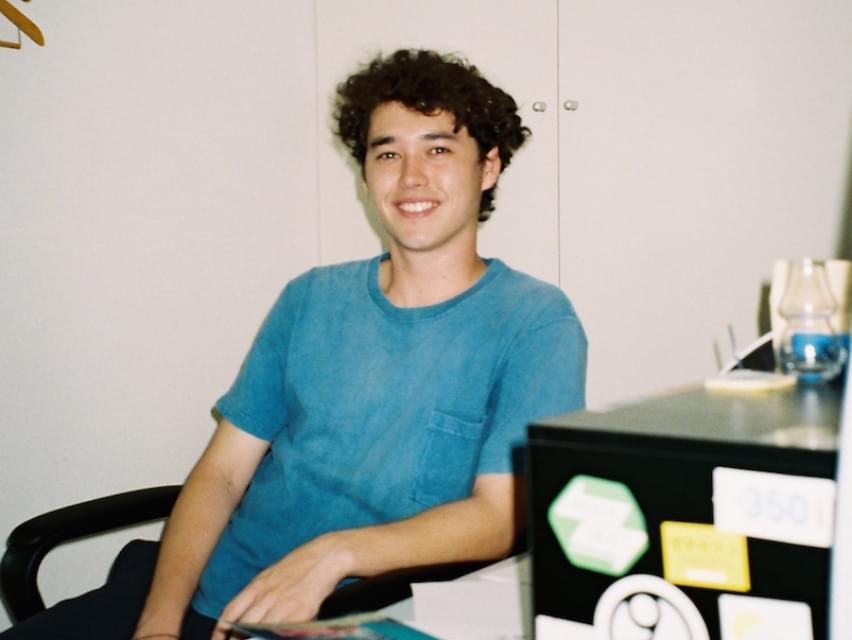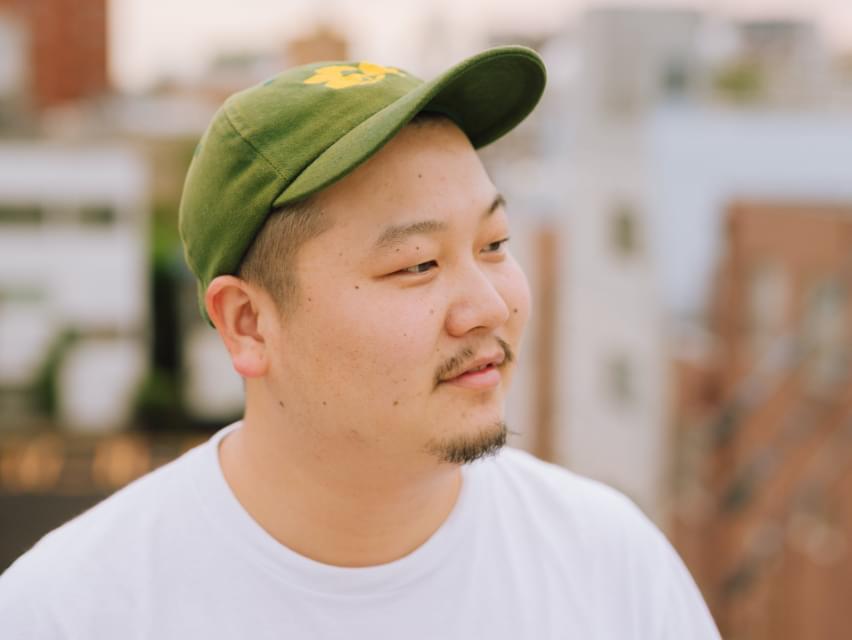For a positive,
neutral and
sustainable future
SUMMARY
Online media that discovers novelty and degree of interest from a neutral point of view and environmental communities that involve many people through familiarity.
These days, since it has become so difficult to anticipate even the near future, we asked two people, who are paving a new way with connections between people, to tell us what they think of our future.
PROFILES
-

Ian Shimizu
Born in 1992. An environmental activist consultant based in Tokyo. While in college, he helped establish the Japan branch of the US-born global climate change non-profit organization 350.org. Since he left the organization in 2018, he has been involved in education and lectures on sustainability and climate change throughout Japan. In addition to appearing on J-WAVE radio, he founded the community "Spiral Club" aiming for a society where people think about the environment together. From November 2019, he co-founded weMORI with Alexander Yale Cigars.
https://ja.wemori.org/ -

Jun Hirayama
Born in Kanagawa prefecture in 1992. Editor-in-chief of NEUT Magazine. While he was studying in the United States, he was noticed by the “difference in interest in society” among young people in Japan and the United States. After graduating from college, he became an editor-in-chief of the social web magazine “Be inspired!” And became the editor-in-chief of the magazine in 2016. From 2018, he renewed the magazine as “NEUT Magazine”. With the concept of “Make Extreme Neutral”, it is being serialized as a web media that delivers topics and people who seem to be <extreme> from a “neutral perspective” that is not bound by prejudice.
http://neutmagazine.com/
CHAPTER 1
Feel the
positive vibes
Do you remember your first impressions when you met?
Jun Hirayama (JH): We first met in 2016. That was before I started NEUT Magazine and I was the deputy editor at Be inspired! media. Ian was involved in setting up 350.org, an environmental group, and, after discussing if we couldn’t do something together, we met for the first time at an interview. At the time, it was very rare that someone so young would be running an NGO.
Ian Shimizu (IS): It was only about six months after starting 350.org and the interview was supposed to be my media debut. Lots of young people who were challenging themselves were appearing in Be inspired! I was really satisfied with the fact that their photographs were taken on film, that it was sharing themes that interested me with completely different points of view, that this kind of scene was coming into play and that these kinds of people were interested in me.
JH: At the time, I had the thought that, as part of the media, I wanted to touch on new aspects of things and deliver to unique people or future readers who were a little bit different and 350.org that Ian was working on had that kind of novelty. I got the impression that it was a new style of NGO and I got positive vibes from it.

CHAPTER 2
To make people
aware of the world’s problems
You both handle themes of a highly social nature but how did you get involved with them in the first place?
JH: Since I was little, I had the impression that social issues were talked about in a negative fashion but when I studied in America for a year, I experienced first-hand the way everyone takes everything at face value and personally, including environmental activities. This made me think that it is important to face social and environmental issues head on in Japan, even for young people, and to root them in our lives. When I met Ian, it was a time when I was thinking that I wanted to change the image of NGOs as an extension of that.
IS: I decided to get involved in environmental issues when I was a university student and the most interesting option available to me at the time was launching 350.org. Before that, it had been difficult to participate in the NGOs that I was interested in if I didn’t have specific knowledge and I felt uncomfortable. That’s why, at 350.org, we work with the theme of ‘lowering hurdles so that it is easy for lots of people to get involved.’
JH: You were working on making those kinds of changes to the image of NGOs after you launched, weren’t you?
IS: It was really enthralling starting from scratch. I was loath to budge even an inch on my own idea of purity so I had decided not to get involved in the traditional post-graduation job hunt.
I also thought that, if I felt that there was something not right with the current nature of NGOs then there must be others of the same generation who felt the same and, with those thoughts as my base standards, I felt that if I did things in a way that satisfied me, lots of young people would come along for the ride and that the scale would widen.



Due to the coronavirus pandemic, we have had to face up to loneliness and mental health and archived articles that symbolize 2020 such as special reports called Matters of Corona or Black Lives Matter and special reports only available in the magazine have been put into a collection.
CHAPTER 3
Community to
create action
It seems that the thing you have in common is that your activities are geared towards creating opportunities for as many people as possible to take action but what are you thinking about community?
IS: In reality, it is the second and third people who might be the most important. The first person starts the dancing and then when the second person joins in, other people around them get into the rhythm and a third then a fourth person join and that’s when numbers start to increase. There are times when a person starts dancing but at the end of the song, they are still dancing on their own.
JH: I hold the belief that it is difficult to keep on doing anything alone. That’s why I want to really show, through the media, that there is more than one of us. For example, when thinking about sustainability, I think the first sustainable thing is the people around you and, unless these activities continue, you can’t make whatever you are doing sustainable.
IS: I think that’s exactly it. Talking about environmental issues, it is, in the end, important that people participate and I am always thinking about how to activate people who are not yet involved?
In addition to people who are really interested in the environment there are many other kinds of people in society; those who like design or singing and, in order to get those kinds of people to take a look at what we are doing, I think it is necessary to incorporate various methods to progress in an enjoyable manner and produce a different kind of energy.
JH: It’s positive communication and creative output, isn’t it? Among individual professionals who obtain knowledge, think, then act, I think that the first part of that, providing knowledge, is the function of the media and I worry about how the media conducts itself in getting people to the stage of acting.
However, a lot of the young Gen Z people have always been interested in the environment and don’t use plastic straws and so on so they are living in a world in which change due to environmental issues is a given. That is precisely why I feel that it is important to properly think about things once you have knowledge, create a group around you and then act. The media should continue to do what it is doing now but I feel that its future value will come not only from communicating but from new projects that entice people into action.
IS: With brand design that makes young people more easily empathetic in the area of identity, weMORI, which we are currently working on, is building professionals from those with knowledge to those who act with a format that is easy for anyone to participate in. If we lower the hurdles to action and put trial challenges that become habit into practice, it becomes like activities that repeatedly polish the app.

Through easy action and collaboration and mobilizing communities all over the world, we are working on the protection and regeneration of forests that has a great effect and immediate effectivity on the two greatest environment crises: climate change and the decrease in biodiversity.
CHAPTER 4
The Nature positive
future where we
can affirm ourselves
without negating
other people
Finally, what would you like your future world to look like?
IS: I think it would be great if, in the end, everyone became nature positive. Most people, including myself, are probably in the nature negative category of those who have an overwhelmingly high ratio of consumption in comparison to producing nature but, in the future, if systems that allow individuals to be nature positive and environmental activities based on social norms become ordinary, I think environmental issues will be solved. I think that, in the future, we need to be in a situation, when we are lying on our death beds, in which we count how many trees we planted over our lives rather than how many we used. If we don’t get to that stage, I really think that, even though things are OK just now, the time will come when it’s too late. That time in the future can only be a product of what we do today so I believe that it is necessary to aim for everyone to be nature positive as much as possible now.
JH: I think that we need to create a society in which everyone has the understanding that they can affirm themselves without negating other people that is here to stay. If everyone has this simple way of looking at things, no one will be excluded and we can also take care of ourselves properly. That is the way of looking at things that we are trying to spread with NEUT Magazine. If we don’t start by affirming ourselves, we end up rejecting whatever we are told. However, everyone has a different environment, situation and education so, first of all, I think it is important to achieve great a basis so that everyone is able to think like that.


